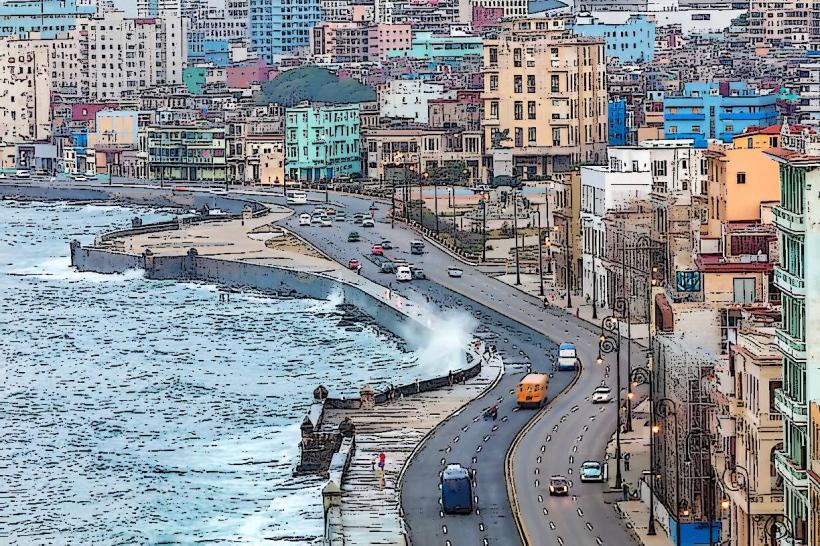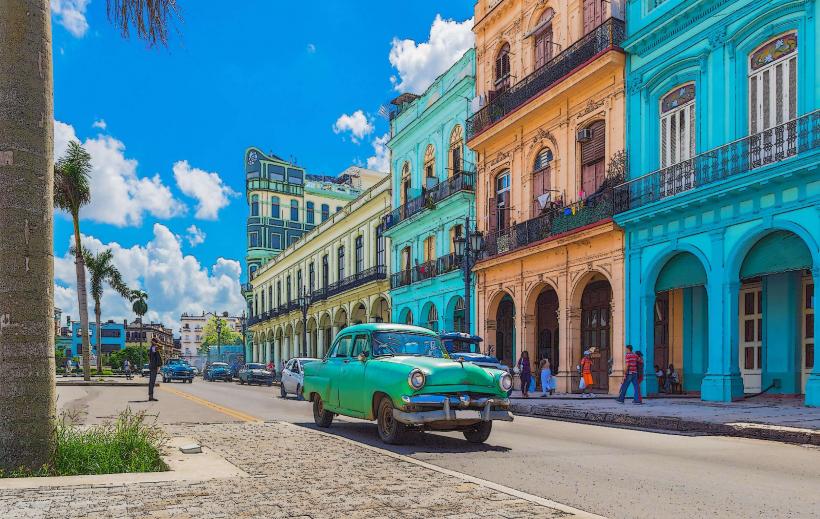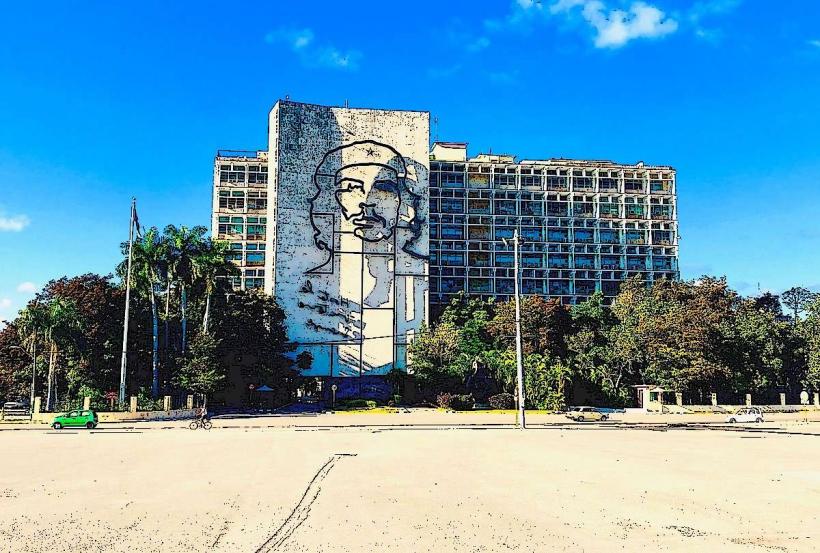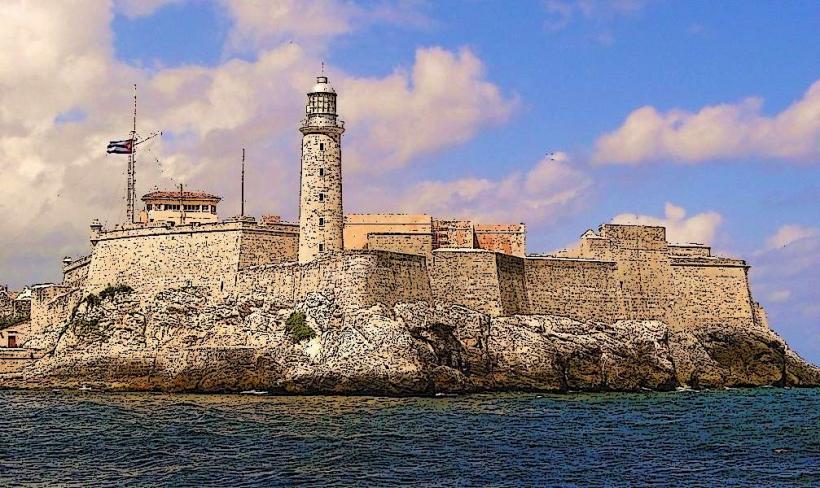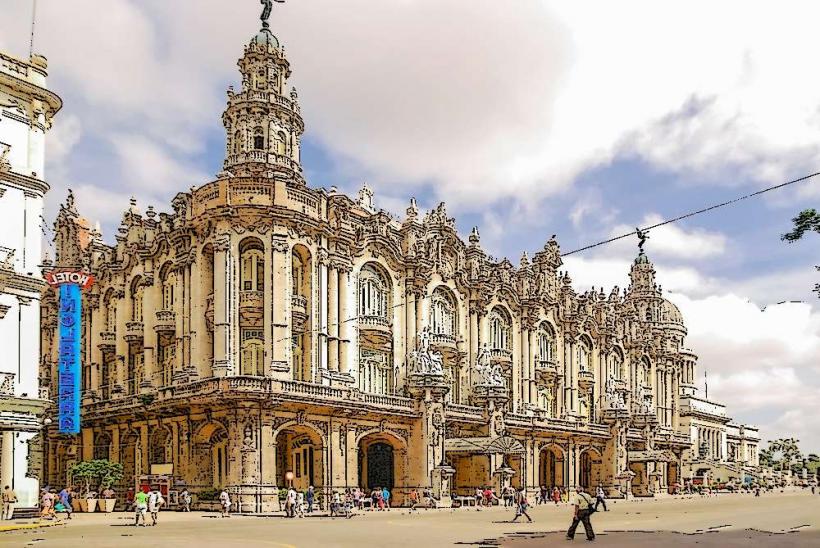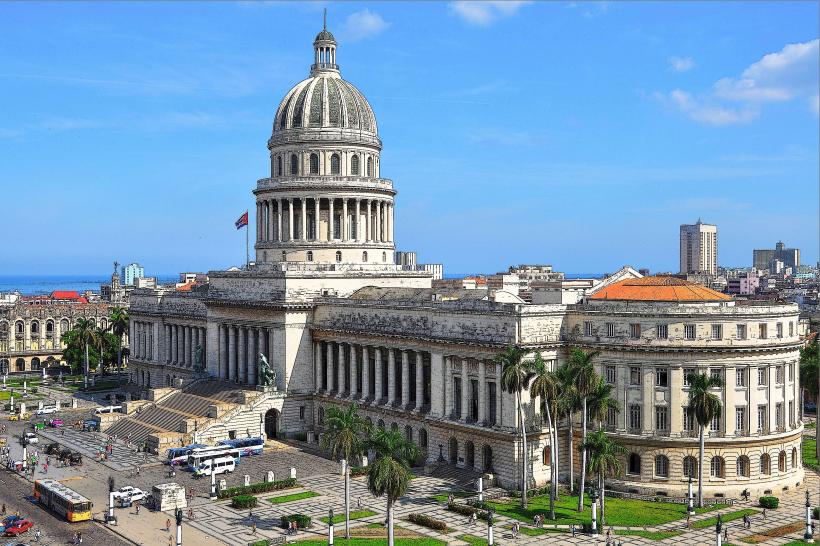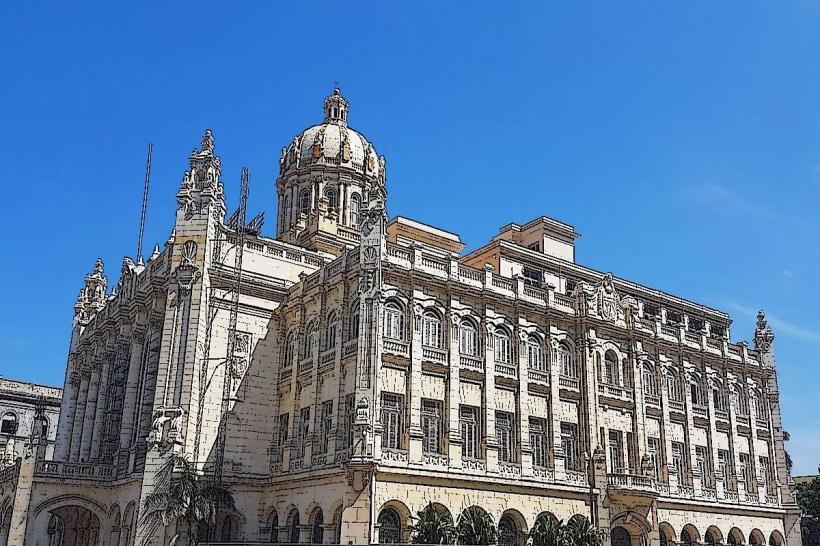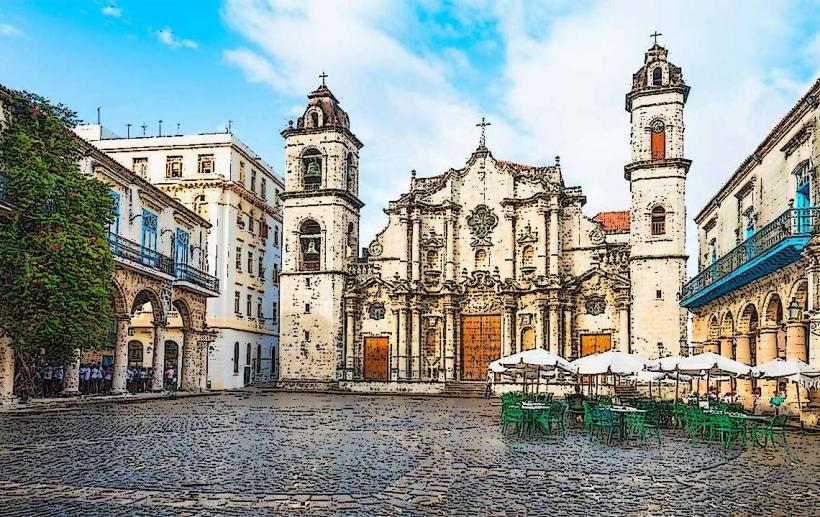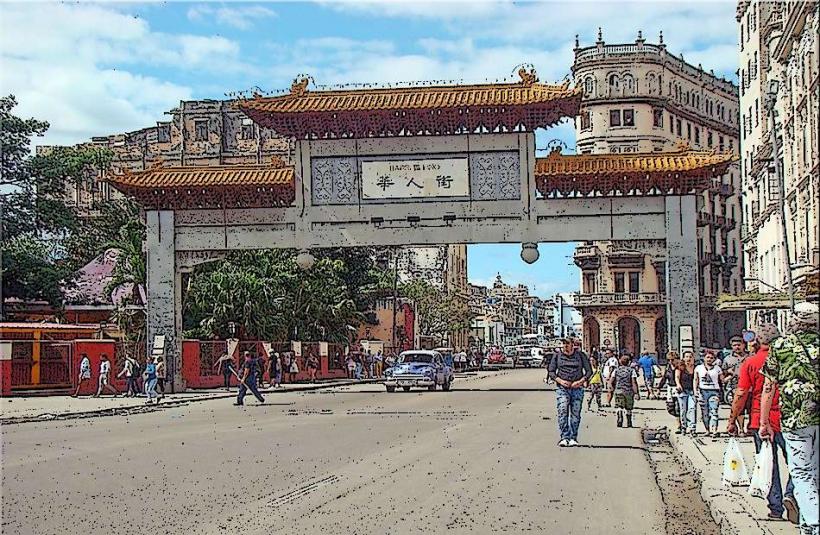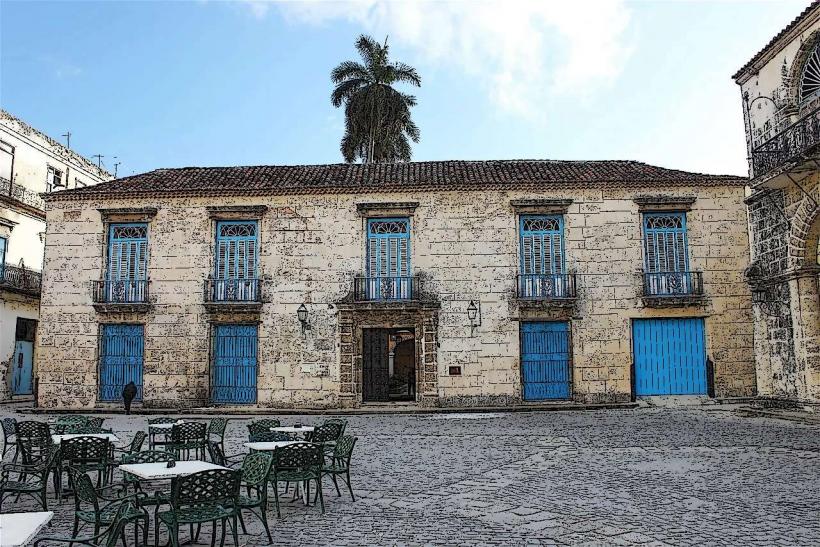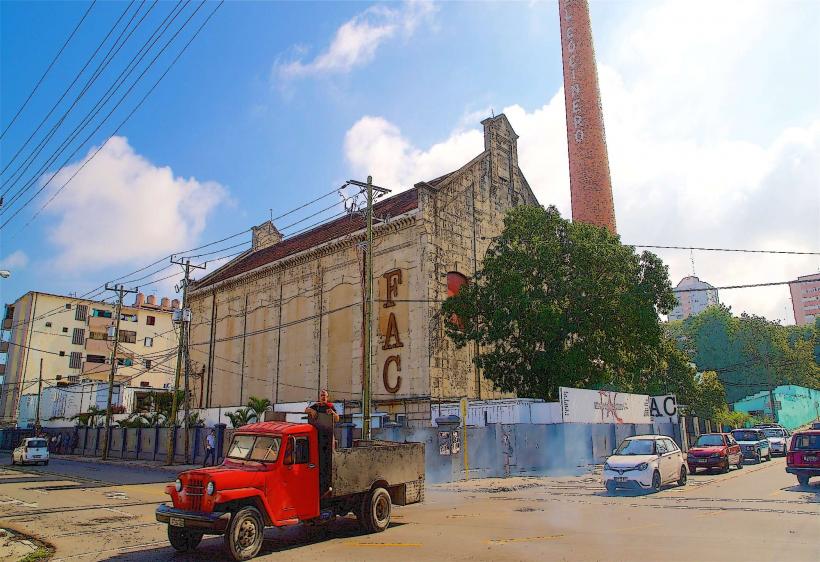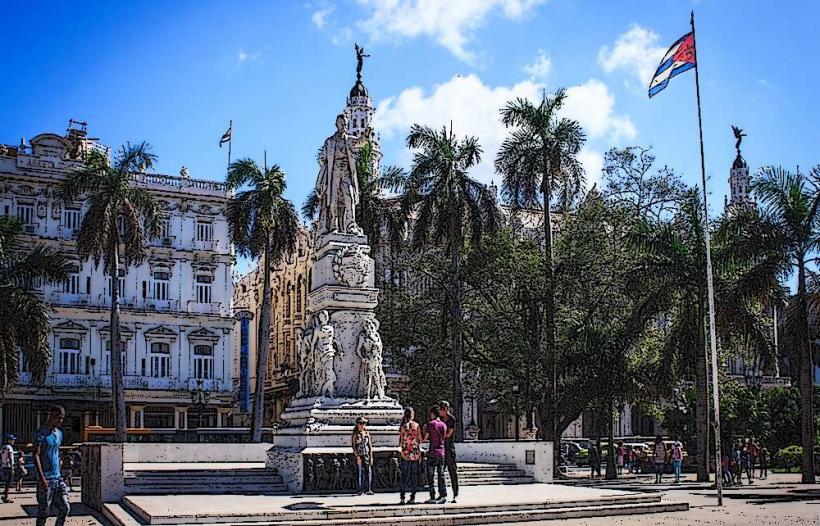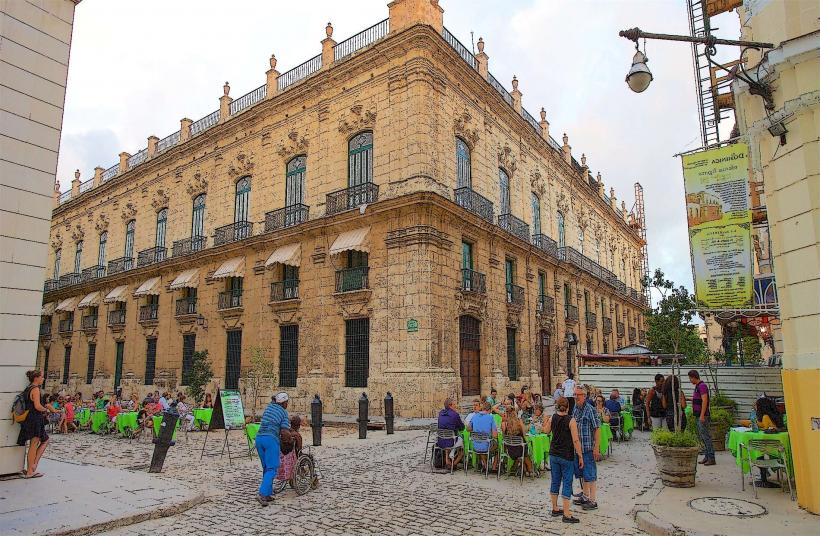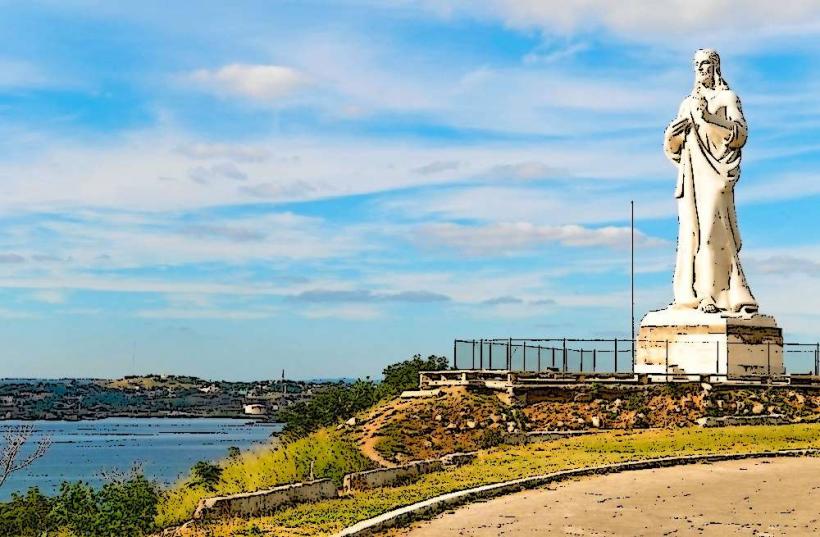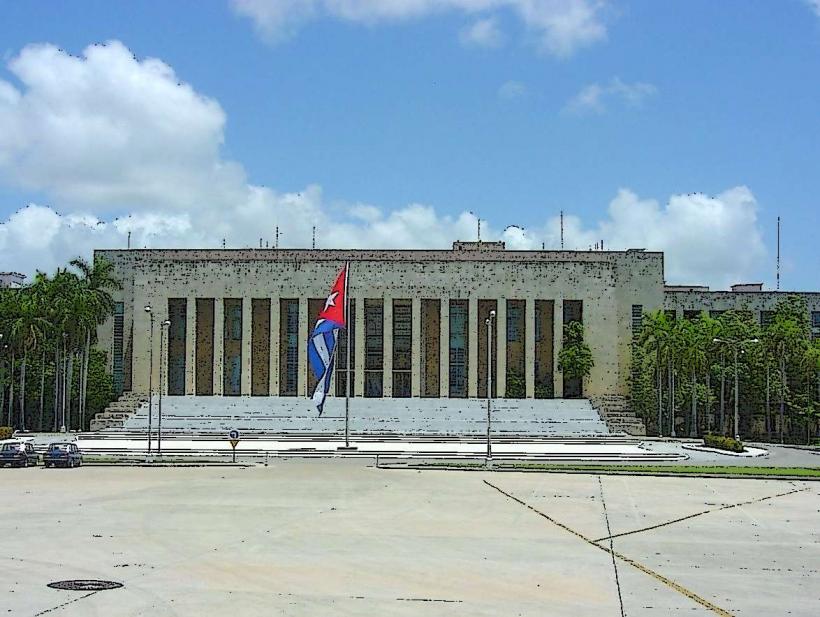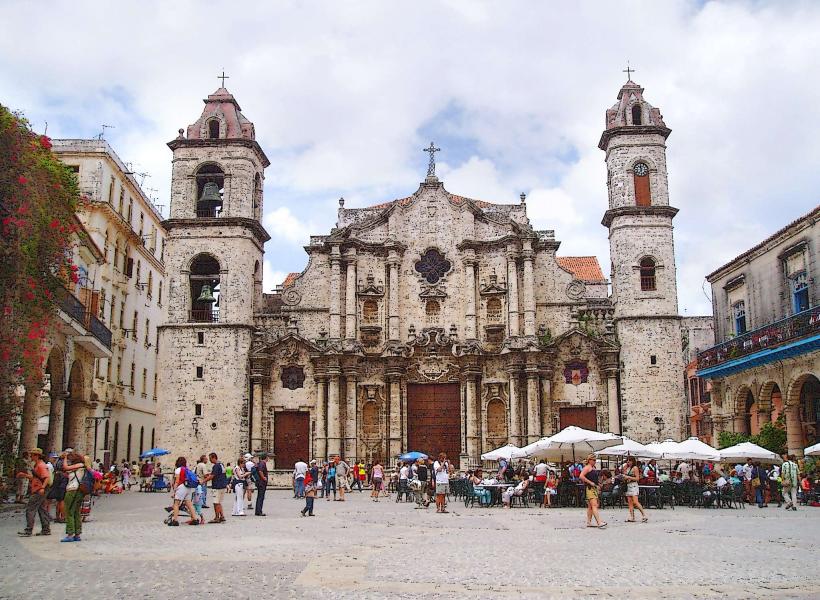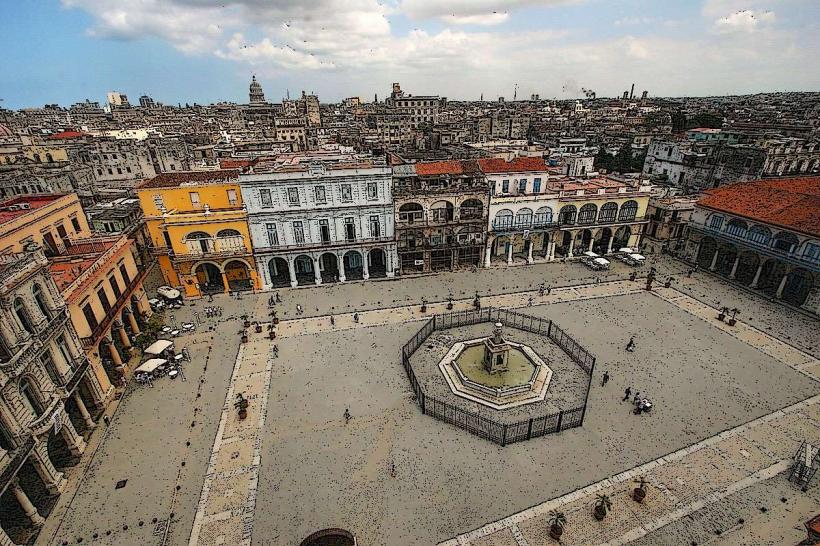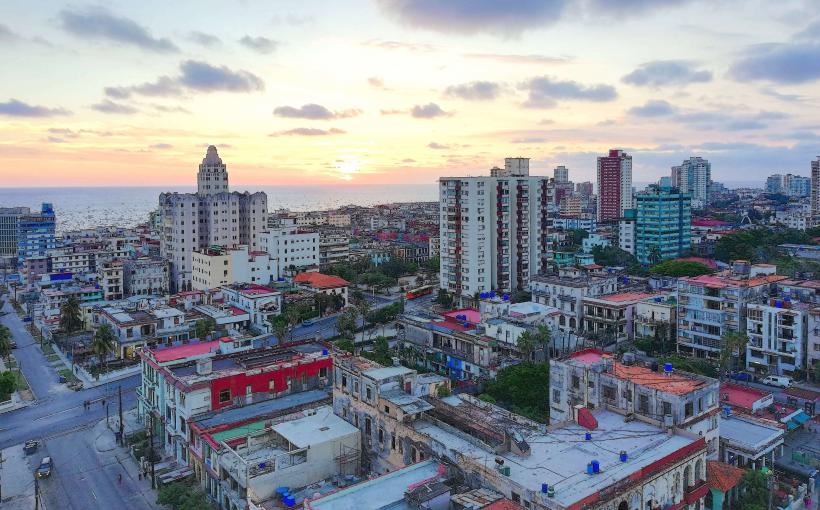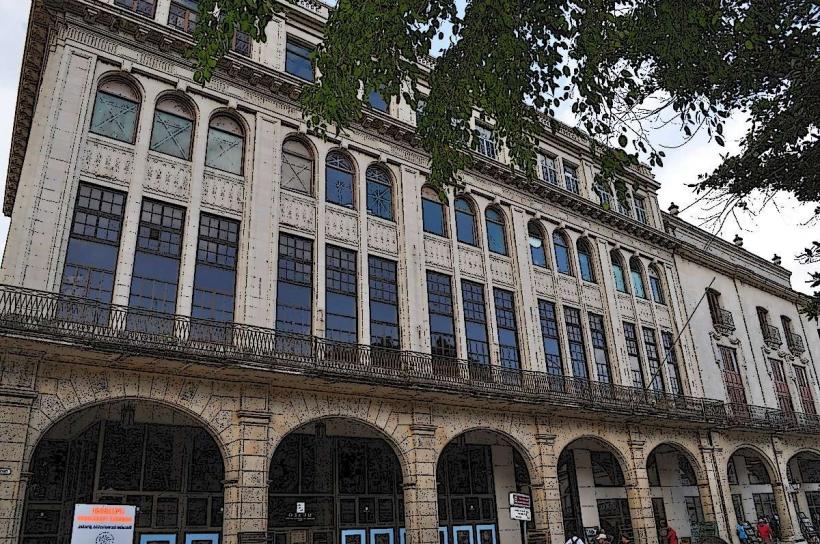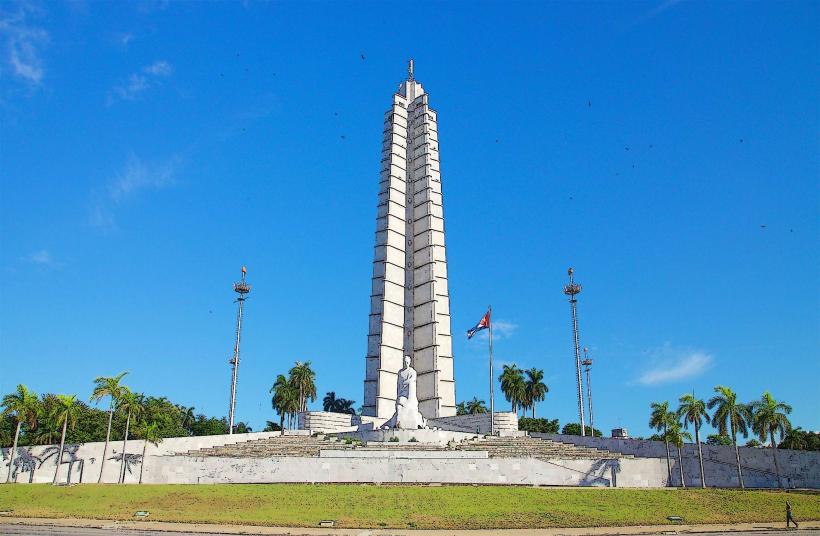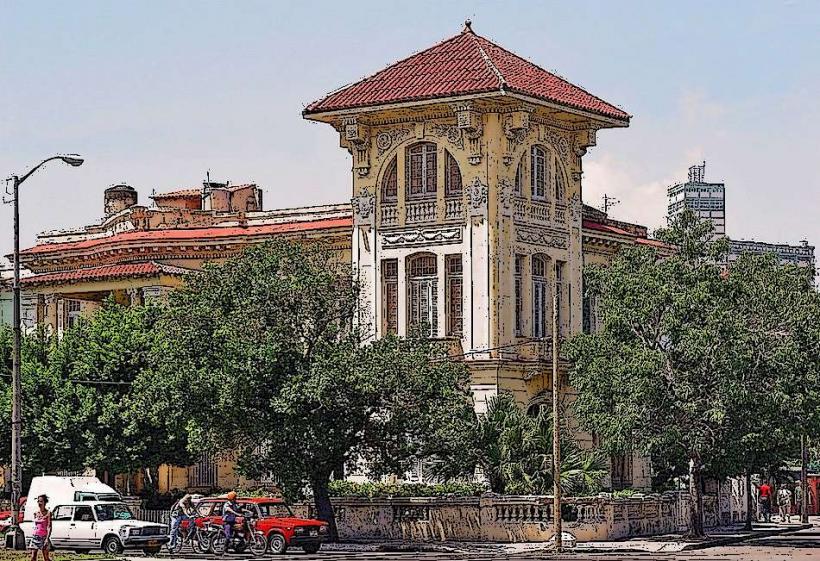Information
Landmark: Museo Nacional de Bellas ArtesCity: Havana
Country: Cuba
Continent: North America
The Museo Nacional de Bellas Artes (National Museum of Fine Arts) in Havana, Cuba, is one of the most important cultural institutions in the country and one of the finest art museums in the Caribbean. The museum houses an extensive collection of Cuban and international art, providing a comprehensive view of Cuba’s artistic heritage, as well as showcasing the work of significant artists from around the world. Here's a detailed look at the museum:
History
The Museo Nacional de Bellas Artes was founded in 1913, making it one of Cuba's oldest cultural institutions. Originally established as the Museo de Bellas Artes, its collection grew steadily, and it eventually split into two separate wings: one dedicated to Cuban art and the other to international art. The museum was officially renamed the Museo Nacional de Bellas Artes in the 1960s, reflecting its expanded scope.
The museum has undergone several transformations and restorations over the years. After the Cuban Revolution of 1959, the museum's collection was expanded to include more Cuban artists, particularly those associated with the revolutionary period and the post-revolutionary era.
Architecture
The museum occupies two buildings, each housing a distinct collection:
- The Palacio de Bellas Artes (Palace of Fine Arts): This is the museum’s main building, and it was inaugurated in 1954. The neoclassical structure is an architectural gem, with a grand entrance, sweeping staircases, and a series of elegant rooms and galleries. Its design includes ornate details, such as marble floors and period decorations that complement the artistic works housed inside.
- The Edificio de Arte Cubano: This newer section was added in 1971 and is dedicated exclusively to Cuban art, showcasing works from various periods in Cuba’s history, from colonial times to the contemporary era.
Collections
The Museo Nacional de Bellas Artes has a vast and diverse collection, divided into two main sections: Cuban Art and International Art. The museum’s holdings cover a wide range of periods, artistic movements, and styles.
Cuban Art
The Cuban collection is one of the most significant aspects of the museum, as it traces the development of Cuban art from the early colonial period through to the 20th and 21st centuries. The collection includes works from major Cuban artists, offering a profound insight into the country's artistic evolution, political landscape, and cultural identity.
- Colonial Art: The museum contains numerous religious works and portraits from the Spanish colonial period. This includes paintings, sculptures, and furniture from the 17th and 18th centuries, showcasing the blending of Spanish and African influences in Cuba’s early artistic heritage.
- 19th Century: The museum has an impressive collection of romantic and academic paintings from the 19th century, including works by Carlos Enríquez, Wilfredo Lam, and other key figures of the Cuban Nationalist School.
- Modern and Contemporary Cuban Art: A significant portion of the collection focuses on modern and contemporary Cuban artists, particularly from the 20th century onward. This includes works from the Vanguardia movement, which sought to express the revolutionary ideals and changes of the time. Prominent artists like Wifredo Lam, Raúl Martínez, and José Bedia are represented, along with younger artists who have contributed to the vibrant Cuban art scene in recent decades.
International Art
The international art collection of the Museo Nacional de Bellas Artes spans several centuries, from the Renaissance to Modernism, featuring works from European and Latin American masters.
- European Art: The museum holds a notable collection of European paintings, including works from the Renaissance, Baroque, and Impressionist periods. Artists like Goya, El Greco, and Rubens are represented in the collection.
- Latin American Art: In addition to Cuban art, the museum features important works by artists from throughout Latin America, such as Diego Rivera from Mexico, Joaquín Torres García from Uruguay, and Oswaldo Guyasamín from Ecuador. This section reflects the rich diversity and cultural heritage of the region.
- Modern and Contemporary Art: The museum also includes works by 20th-century European and American artists, including those from the Surrealist and Abstract Expressionist movements. Paintings by artists such as Chagall, Picasso, and Dalí help to broaden the museum's global perspective.
Notable Works and Artists
Some of the standout works in the museum’s collection include:
- "The Worker" by Carlos Enríquez: A powerful example of 20th-century Cuban art, this painting captures the themes of labor and social struggle.
- "La Jungla" (The Jungle) by Wifredo Lam: One of the most iconic works of Cuban modernism, Lam's surrealist masterpiece blends Afro-Cuban themes with European avant-garde techniques.
- "Portrait of a Young Woman" by El Greco: A fine example of the artist’s distinctive mannerist style, which combines emotion with intricate details.
- "The Burial of the Count of Orgaz" by El Greco: A famous religious work that is considered one of the masterpieces of Spanish painting.
- "The Farmers" by Raúl Martínez: This piece represents the movement toward abstraction and socialist realism in post-revolutionary Cuba.
Temporary Exhibitions and Cultural Events
The museum regularly hosts temporary exhibitions, focusing on both Cuban and international art. These exhibitions allow for a dynamic cultural exchange and provide opportunities to experience a wide variety of artistic expressions, ranging from contemporary installations to retrospective exhibitions of historical movements.
In addition to exhibitions, the museum hosts a range of cultural events, including artist talks, workshops, and special programs that aim to engage the public with the arts and foster a deeper understanding of Cuba's creative culture.
Visitor Experience
The museum provides an enriching experience for art enthusiasts, history buffs, and those interested in Cuban culture. It is an essential stop for anyone visiting Havana, offering a comprehensive view of the island's art history, as well as a broader understanding of the global art movements that have influenced Cuba.
- Guided Tours: The museum offers guided tours in multiple languages, providing in-depth explanations of the artworks and the context in which they were created.
- Museum Shop: The museum has a gift shop where visitors can purchase reproductions of artworks, books, and other cultural items related to Cuban art.
- Café: There is also a café within the museum, providing a relaxing spot to enjoy refreshments while reflecting on the art.
Conclusion
The Museo Nacional de Bellas Artes is a true gem in Havana, offering an unparalleled glimpse into Cuba's rich artistic traditions and the global art movements that have shaped the island's culture. Whether you're a lover of Cuban art, European masters, or modern masterpieces, the museum provides a comprehensive and engaging experience for all.

